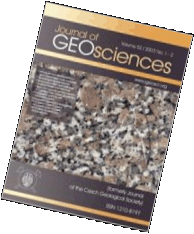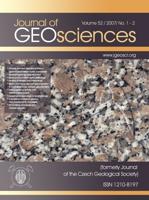 Export to Mendeley
Export to MendeleyMore articles on Ore minerals, mineral deposits and processes of their formation
More articles on Granitic magmatism in collisional orogens
Review paper
Drill hole CS-1 penetrating the Cínovec/Zinnwald granite cupola (Czech Republic): an A-type granite with important hydrothermal mineralization
Journal of Geosciences, volume 61 (2016), issue 4, 395 - 423
DOI: http://doi.org/10.3190/jgeosci.226
The Sn-W deposit at Cínovec and Zinnwald (Eastern Krušné hory/Erzgebirge) is associated with a granite cupola of Late Variscan age intruded into the Teplice rhyolite. The 1596 m deep CS-1 drilling was completed in 1961-1963 at Cínovec in the center of the granite cupola. This paper reviews earlier and new petrological and geochemical data revealed by the CS-1 drill core. The drill-log showed that the upper granite zone of the cupola consists of lepidolite-albite granite grading continuously into zinnwaldite granite in fine-grained and medium-grained variants. Below 730 m depth, medium-grained, porphyritic lithian annite granite enclosing small bodies of porphyritic lithian annite microgranite was observed. Chemical analyses of the drill core are discussed in terms of increasing depth, significant textural variations and trace-element concentrations for As, Ba, Be, Bi, Mo, Nb, Rb, Sn, Th, U, Y, W, and Zr. The zinnwaldite/lithian annite transition in the granite profile is well demonstrated by the abrupt changes in Li, Fe and Ti concentrations with depth. High concentrations of Sn, W, and Bi are mainly confined to the greisen zones, associated with both sub-horizontal and steep fissure systems. As a consequence of subsolidus albitization, the pink coloration of lithian annite granite was changed to white-grey in the upper cupola zone above c. 730 m depth. The textural changes are interpreted as modifications of earlier microgranites by the later emplacement of medium-grained granites along sharp contacts. The major effect of subsolidus hydrothermal alteration is manifested by pervasive development of lepidolite and zinnwaldite at the expense of earlier lithian annite and by an intense albitization (Ab ~98 mol. %) reaching a depth of c. 730 m below the surface. The hydrothermal overprinting in the CS-1 drill core is interpreted to be caused by fluids derived from a deep lower crustal source, probably near the boundary with the mantle as witnessed by the coexistence of lamprophyres and albite-rich granites in several ore districts of the Krušné hory/Erzgebirge with Li, Sn, and W mineralization.
Webdesign inspired by aTeo. Hosted at the server of the Institute of Petrology and Structural Geology, Charles University, Prague.
ISSN: 1803-1943 (online), 1802-6222 (print)
email: jgeosci(at)jgeosci.org


IF (WoS, 2022): 1.4
5 YEAR IF (WoS, 2022): 1.8
Policy: Open Access
ISSN: 1802-6222
E-ISSN: 1803-1943